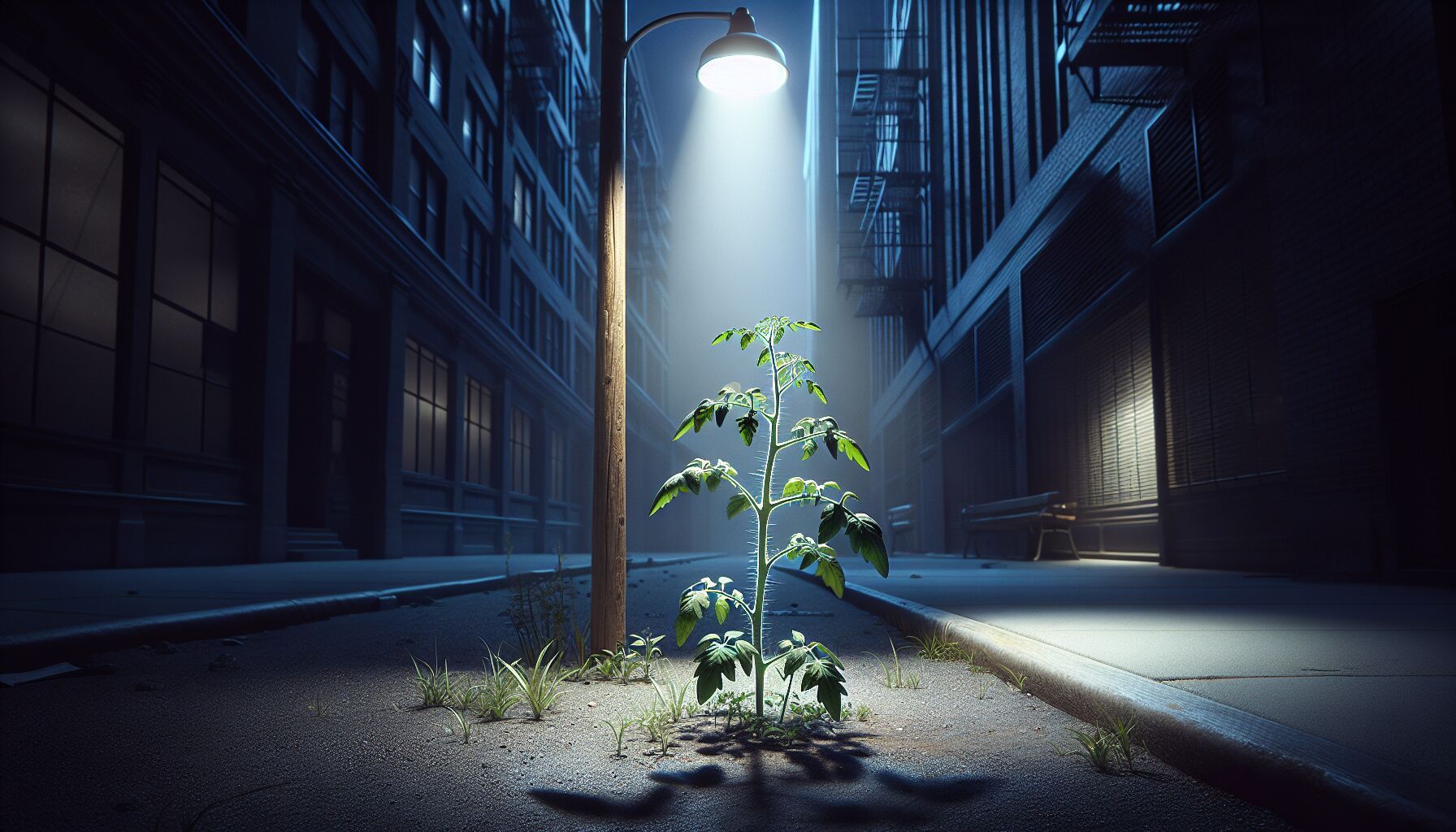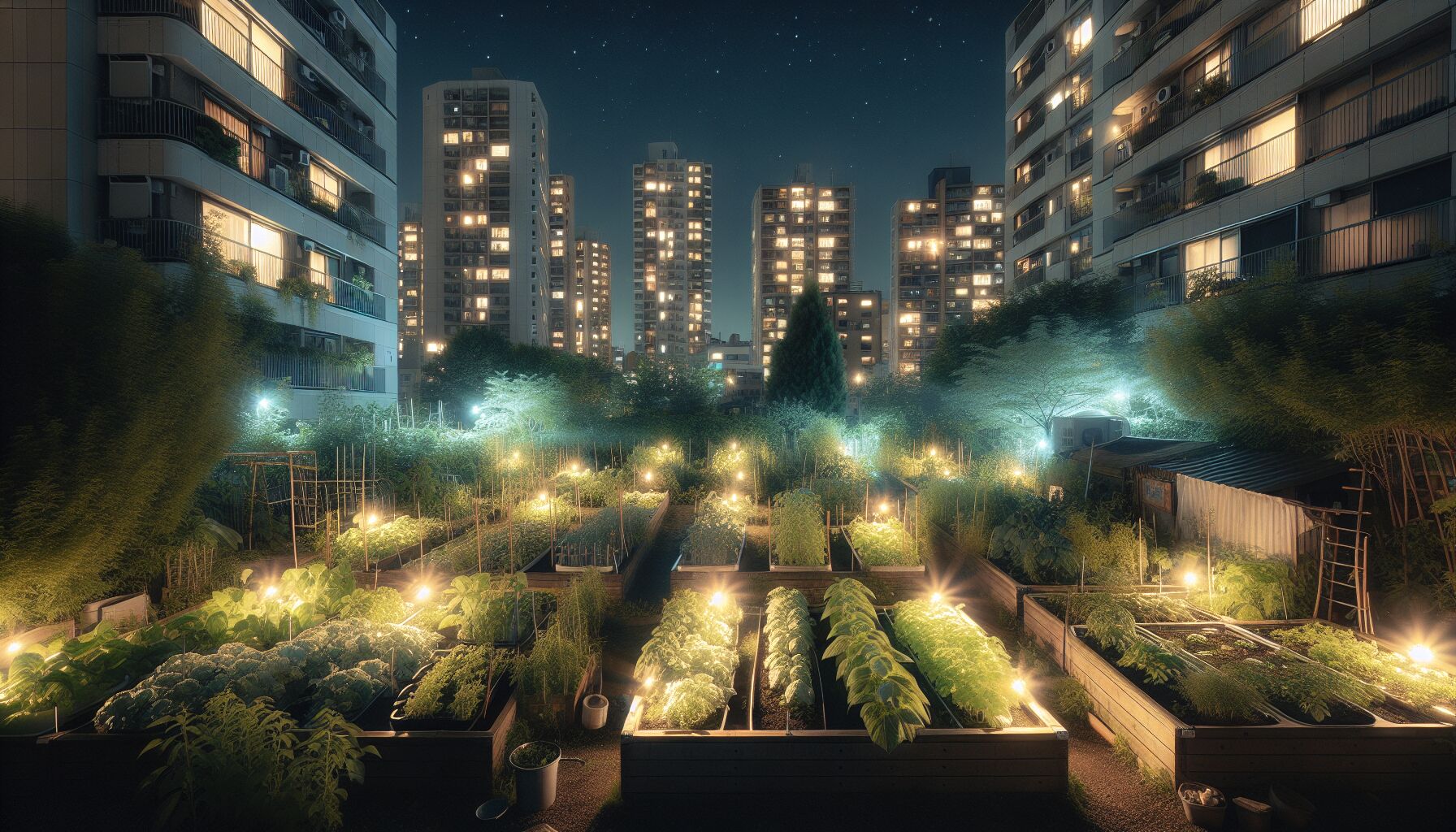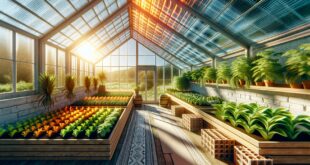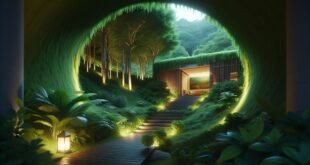 There’s something quietly miraculous about the way plants respond to light. It’s not just sunshine they’re after — but rhythm, contrast, rest. In urban farming spaces where streetlamps hum all night and security lighting spills across fences, this natural balance starts to slip. The effect isn’t always immediate, but over time, it cuts deep.
There’s something quietly miraculous about the way plants respond to light. It’s not just sunshine they’re after — but rhythm, contrast, rest. In urban farming spaces where streetlamps hum all night and security lighting spills across fences, this natural balance starts to slip. The effect isn’t always immediate, but over time, it cuts deep.
Artificial light — even the kind that seems gentle or energy-efficient — can scramble a plant’s internal rhythms. Plants read light cues not only to photosynthesize, but to know when to leaf out, stretch, bloom, and go to seed. Mess with the timing, and you might get premature flowering, delayed dormancy, or weak stem development. Imagine a tomato plant that flowers before its roots are ready — you’ll get blossoms, maybe even fruit, but nothing sturdy enough to sustain real harvests.
“Look deep into nature, and then you will understand everything better.” — Albert Einstein
That wisdom hits harder in the context of city gardening. We don’t often think of lamp posts as disruptive forces. But they’re more than just ambient light — they’re environmental stressors. A study published in the *Journal of Ecology* found that prolonged exposure to nighttime lighting can stunt root development in lettuce and alter pigment production in beans. The consequences aren’t just cosmetic. Nutrient density, water retention, even a plant’s resistance to pests — all can take a hit when its circadian cycle is off.
In nature, darkness isn’t absence — it’s signal. It tells plants to slow down, stop certain biological functions, focus inward. With increasing light pollution in neighborhoods and apartment courtyards, that vital pause disappears. Instead of resting, plants stay metabolically active all night long — quietly burning energy they should be storing. It’s like keeping your phone screen on 24/7. Eventually, the battery dies early.
And then there’s the shape of things. Tall, leggy seedlings — the kind gardeners dread — often result from low-level artificial light mimicking dawn or dusk. It tricks the plant into thinking there’s still time to grow upwards toward an unreachable light source. The result? Spindly herbs, brittle stems, leaves that yellow too soon.
This matters for more than aesthetics. For urban farming, where space is tight and every square foot counts, weak or poorly-timed growth affects food security, especially in underserved areas relying on small garden yields. Light impacts not just what grows, but how well it nourishes.
That brings up the hidden players in all of this — hormones. Plants rely on photoreceptors like phytochromes to measure red-to-far-red light and decide when it’s time to grow, flower, or sleep. Artificial lighting, especially LEDs heavy in blue and white spectra, throws off these measurements. You might see lettuce bolt early under a nearby porch lamp or basil that stubbornly refuses to bush out. These aren’t gardening errors — they’re biochemical responses.
Now, that doesn’t mean every bulb is toxic to your kale. But it does mean paying attention to nighttime lighting around your garden can make a measurable difference. Consider this: lighting that interferes with plant growth often sneaks in sideways — from a neighbor’s floodlight, a parking lot, or a trail of solar-powered path lights that never quite turn off. Understanding how soft light speaks to biology can help shape small but meaningful fixes.
The goal isn’t to eliminate all light — it’s to respect its role. Nature works in cycles: bright and dim, active and still. Plants evolved under stars and shadows, not 24-hour daylight. And while urban farming adapts to modern constraints, it still asks for the same elemental respect: light when it’s needed, and dark when it’s time to rest.
As Wendell Berry once said,
“The Earth is what we all have in common.”
That includes our responsibility not just to feed ourselves, but to let the soil and its green inhabitants breathe — in pace, in season, in trust.
Disruption of nocturnal pollinators
Pollinators don’t punch a clock. They move by instinct, hunger, and the subtle cues of time — mostly marked by light. When those cues are scrambled by the glare of streetlamps or bluish-white LEDs, everything from night-flying moths to sleep-sensitive bees gets thrown off balance. For urban gardens clinging to life between concrete walls and chain-link fences, that disruption can be devastating.
Let me explain how it happens. Most folks think of pollinators as busy little workers in the day — bees buzzing around lavender or butterflies lazing over milkweed. But in truth, a not-so-small part of pollination happens after sunset. Moths, beetles, bats, and even certain flies are nocturnal visitors. They’re silent, efficient, and mostly invisible helpers. Some researchers argue that as much as 30% of flowering plants rely on nighttime pollinators for reproduction. That’s not a small number — and light pollution messes directly with their internal compasses.
“Man has lost the capacity to foresee and to forestall. He will end by destroying the earth.” — Albert Schweitzer
A bit dramatic? Maybe. But not off base. Artificial lighting, especially broad-spectrum white light, interferes with the navigational ability of widespread species like the hawk moth. These creatures are naturally drawn to the moon and stars. When LED light sources outshine those celestial markers, moths may hover endlessly around the glow, never reaching the flowers they’re supposed to pollinate. It’s a death spiral of sorts — distraction through overexposure.
Think of it as spiritual clutter. Just like our brains get rattled by too many notifications and emails after dark, a moth’s simple, beautiful purpose is derailed by something we consider “normal” lighting. The result? Fewer successful plant-to-plant visits, which quietly adds up — year after year — to lower fruit yields, especially in species like night-blooming squash, yucca, or evening primrose.
Now, if you’re gardening in a city apartment courtyard, you might be wondering — “Does that really affect me?” Short answer: yes. Pollinators don’t recognize property lines. They move in complex webs through green spaces, rooftops, and neglected strips of land. They need connected darkness to do their work. If even one stretch of that travel path is a beacon of intense light, the whole system falters.
“There’s no WiFi in the forest, but I promise you’ll find a better connection.” — Unknown
It sounds cheeky, but there’s truth there. In environments where the sensory field is overlit but undernourished — which describes much of our urban infrastructure — pollinators lose their rhythm. And when they falter, plant growth slows. Insects like small native bees or beetles may choose dimmer routes, bypassing gardens entirely. Others shorten their foraging range due to stress. There’s evidence from the National Library of Medicine showing that artificial nocturnal light can significantly reduce the visitation frequencies of nocturnal insects — especially moths — in flowering corridors.
That ripples out. If fewer flowers get pollinated, fewer fruits set, and fewer seeds mature. For an urban farming enthusiast growing heritage tomatoes or hand-pollinated melons, that’s not just an annoyance. It’s a real decline in seasonal harvests. And it can quietly erode your garden’s resilience over time.
Here’s another layer — predator-prey balance shifts too. Because light attracts insects, it inadvertently increases the exposure of prey species while benefiting a few predatory types hunting by sight. That narrow benefit inflates certain populations and diminishes others — destabilizing the small, fragile ecosystems within city plots. We forget that the invisible scaffolding propping up our food systems includes a web of relationships far more ancient and balanced than anything one gardener can build on their own.
So, what can be done without turning off necessary lights altogether? We’ll get into practical steps soon, but the spiritual starting point is this: choose darkness where you can. Celebrate it. Let it return to the garden as something sacred — not empty, but full of potential.
A backyard light left on overnight because of habit or convenience might seem harmless. But scaled out across thousands of homes and neighborhoods, the consequence is staggering. From the edges of rooftop gardens to forgotten corner lots where moths still hover, that quiet darkness matters. It is the bridge between plant growth and pollinator health — and without it, urban farming loses its unseen allies.
So next time you flick on a porch light near your raised beds or catch a glimpse of a beetle darting past chamomile flowers, pause. Ask yourself — what if this night needed to be darker for something beautiful to occur?
Strategies for mitigating light pollution in gardens
 There’s a kind of quiet rebellion in choosing less light. In a world obsessed with brightness — literally and figuratively — allowing your garden to slip into true darkness each night can feel radical. But it’s incredibly effective. If you’re trying to grow food, restore pollinator routes, or simply breathe life into a patch of soil wedged between apartment blocks, diminishing light pollution could be one of the most valuable moves you make.
There’s a kind of quiet rebellion in choosing less light. In a world obsessed with brightness — literally and figuratively — allowing your garden to slip into true darkness each night can feel radical. But it’s incredibly effective. If you’re trying to grow food, restore pollinator routes, or simply breathe life into a patch of soil wedged between apartment blocks, diminishing light pollution could be one of the most valuable moves you make.
So, how do you pull it off without compromising safety, navigation, or sanity? Start from the edges. The goal isn’t a blackout. It’s intentional lighting.
- Swap out harsh bulbs — LEDs with a high blue-spectrum output or cold white hue cause the most disruption. Choose warm-white (<3000K) or amber LEDs. These mimic twilight more accurately and reduce ecological stress.
- Use motion sensors or timers so lights don’t stay on all night uncaringly. A porch light that only triggers when someone walks past won’t confuse your basil into bolting prematurely.
- Install downward-facing fixtures — called “full cutoff” lighting. They direct the beam to where it’s needed, reducing skyglow and glare into neighboring beds or courtyards.
- Create physical buffers — Even a string of tall sunflowers or vertical trellising with vining beans can help soften neighboring light. Living walls or mesh shade cloths also help redirect spillage from nearby buildings.
Let’s not forget the emotional pull here. Gardens aren’t only about yield. They’re sanctuaries. When you bring them into harmony with the ebb and flow of natural light, they become more than food sources — they become places that nourish you inwardly, too.
Curtailing light pollution in urban farming circles is a balance between pragmatism and reverence. You might still need a sensor lamp for alleyway safety or community events after dusk. That’s fine. But consider limiting how much of that light reaches the soil. As the old farming saying goes, “What the soil sees, the seed remembers.”
Try this for smaller spaces: use low-glow path lighting shielded with opaque barriers or set them close to the ground. Keep them far from raised beds or flower areas. Many gardeners have shifted to low-voltage solar options with filtered covers — these cast a quieter glow, just enough to prevent tripping without stretching into the pollinator’s range. It’s about creating microclimates of darkness, like pockets of safe haven.
You can also bring awareness into community design. If you’re part of a neighborhood gardening group or an urban farming initiative, suggest hosting a “Dark Garden Night” — one evening a month where everyone individually avoids lighting their landscapes or patios. Encourage folks to notice how it feels to walk among plants under starlight, how silence settles differently when electricity pulls back. Not to create nostalgia, but to restore memory.
“We do not inherit the Earth from our ancestors; we borrow it from our children.” — Native American Proverb
That statement hits differently when standing in a garden where the sunflowers bend slightly toward the real moon, not a security light. Where pollinators hum under unseen stars and spider webs gleam only when the flashlight catches them just right. These moments don’t just feel good — they recalibrate us to something more ancient and sane.
If safety is a pressing concern, experiment with dimmable systems synced to localized need. The Department of Energy’s lighting design tools offer guidance on energy-saving, wildlife-sensitive options. You don’t need to reinvent indoor mechanics — just reorient a few habits. Assess: which lights do I use out of convenience, not necessity? Could a candle or solar lantern suffice for the back step?
And while you’re tweaking gear and bulbs, don’t forget to include your neighbors. One overly bright second-floor lamp can undo the benefit of your thoughtful low-glow plan. Community awareness matters. Share why it’s not just aesthetics — light pollution nudges entire ecosystems off-kilter. Your neighbor’s tulsi or backyard mint might thank you quietly.
Even small steps ripple outward. A darkened patio. A motion-triggered front walk. Replacing bright signage near a community garden plot with a passive reflector. Each one rebuilds a little of what brightness has blurred — a rhythm, a cycle, a promise of darkness that restores rather than hides.
Urban farming doesn’t survive off soil alone. It draws life through relationships — with weather, insects, bacteria, people, the unseen movements of time. Let your garden sleep. Let the pollinators return. And find in that returning something solid and unspoken that’s been waiting under the glare.
 DS Haven In Light Of Things
DS Haven In Light Of Things





